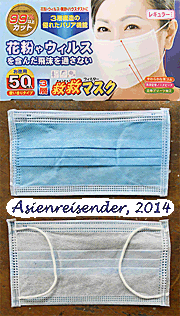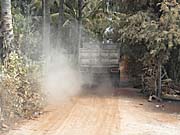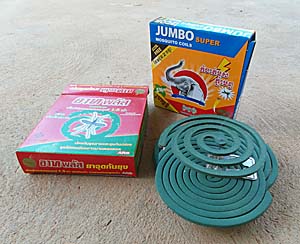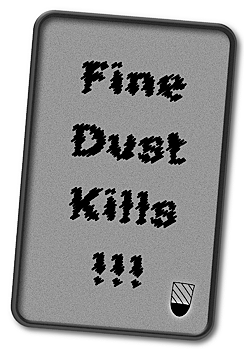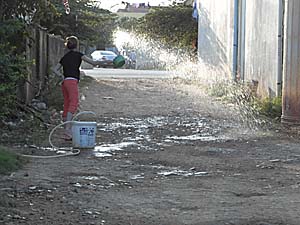1.
Fine Particulate Pollution
Pollution is rampant in our times. Particularly in Southeast Asia with it's economic boom and the low (or often: not existing) environmental standards. There are many different kinds of pollutions and pollutants. One of which it's less known even being a pollutant is dust.
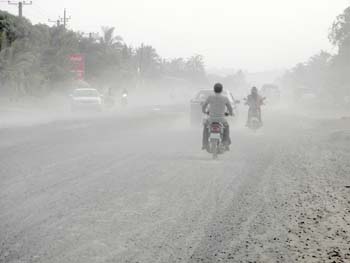
The national road 33 between Kampot and Kep in Cambodia. In the dry season and under dry weather conditions the situation is permanently so; even in nighttime there is traffic and the dust never lays down. Many people including a lot of kids are living along this road. Image by Asienreisender, 2/2014
Dust consists of small particles of the most different kinds. They are smaller than 10 micrometer, some are as small as being measured in nanometers (ultrafine particles) - no more to see with the bare eye. Generally spoken, as smaller a particle is, as more dangerous it is for the health of a living being. For humans and animals it's so that bigger particles can be physically absorbed, but very small ones penetrate the lungs deeply. The level of danger is also dependent on the shape, better the surface of the particles. Some are much more dangerous than others. So does soot for example consists of a very dangerous variety of fine dust particles (fine particulate).
A heavy or longer lasting impact of fine particulate can cause serious diseases, from caughing up to pneumoconiosis and cancer. In Germany the populations life expectancy is in average reduced by ten month due to it. According to the European Commission there are annually 310,000 people in the EU dying untimely due to dust pollution. In Southeast Asia the number will doubtlessly be much higher.
There is no harmless concentration for fine dust - it's always harmful, and it's harm increases by the degree of concentration and the time of exposure to it.
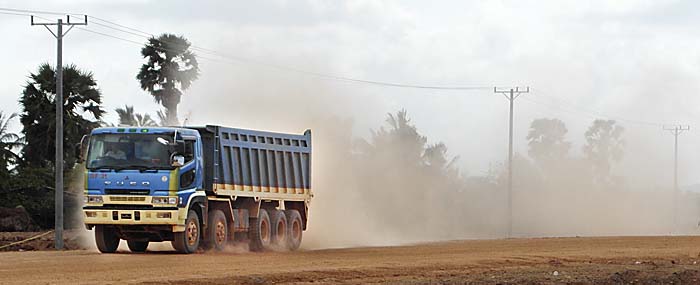
A single truck is causing an enormous amount of dust on a dirt road. Coming in such a haze one get's a high dose of fine particulate; besides the clothes are immediately ready for the laundry. The dust cloud whirls meters up and is transported by the wind over many kilometers. The worst fate suffer the people who live at the sides of such roads - they are under a permanent impact of heavy dust pollution.
As faster a vehicle goes, as more dust it whirls up. Since time pressure is unknown for Orientals, there is another reason for fast driving: it's fun.
The most roads in Cambodia are still dirt roads, often even inside towns and cities. Nevertheless is the traffic increasing.
